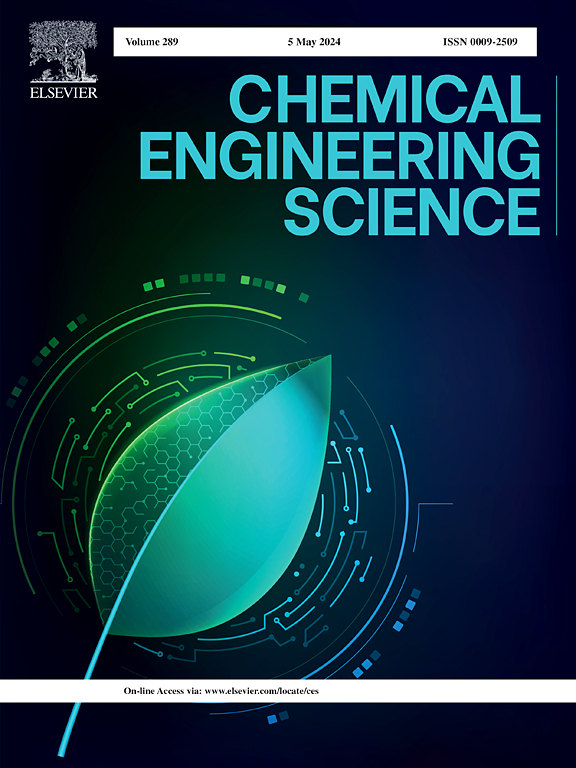聚并角对气泡偏离的影响:来自动态观察和模拟的见解
IF 4.1
2区 工程技术
Q2 ENGINEERING, CHEMICAL
引用次数: 0
摘要
本研究采用自主开发的三维聚并诱导气泡偏离可视化系统和数值模拟,探讨聚并角(ω)对气泡脱离的调控机制。结果表明:随着ω的减小(90°→20°),三相接触线由“双向同步收缩-异步收缩-单向扩散”转变,接触角滞后增强,气泡运动由垂直脱离转变为水平滑动;当表面接触角超过60°时,气泡脱离被完全抑制,ω失去作用。相图分析表明,表面疏水性和聚结角通过相互竞争的粘附力和流场动量控制分离。大ω(≥70°)产生垂直动量(Re = 120,We = 0.27)驱动分离,小ω(≤45°)产生水平振荡(Re = 70,We = 0.11)和能量耗散。基于表面能和粘滞阻力功平衡模型的关键准则量化了不同工况下气泡脱离的能量阈值,为优化工业气泡动力学提供了见解。本文章由计算机程序翻译,如有差异,请以英文原文为准。
The effect of coalescence angle on bubble departure: Insights from dynamic observations and simulations
This study uses a self-developed 3D coalescence-induced bubble departure visualization system and numerical simulations to explore the regulatory mechanism of coalescence angle (ω) on bubble detachment. Results show that as ω decreases (90°→20°), the three-phase contact line transitions from “bidirectional synchronous contraction − asynchronous contraction − unilateral diffusion”, enhancing contact angle hysteresis and shifting bubble motion from vertical detachment to horizontal sliding. When the surface contact angle exceeds 60°, bubble detachment is fully suppressed, and ω loses its effect. Phase diagram analysis reveals that surface hydrophobicity and coalescence angle control detachment through competing adhesion forces and flow field momentum. Large ω (≥70°) generates vertical momentum (Re = 120, We = 0.27) to drive detachment, while small ω (≤45°) causes horizontal oscillations (Re = 70, We = 0.11) and energy dissipation. A critical criterion based on the balance model of surface energy and viscous resistance work quantifies the energy thresholds for bubble detachment under different operating conditions, offering insights for optimizing industrial bubble dynamics.
求助全文
通过发布文献求助,成功后即可免费获取论文全文。
去求助
来源期刊

Chemical Engineering Science
工程技术-工程:化工
CiteScore
7.50
自引率
8.50%
发文量
1025
审稿时长
50 days
期刊介绍:
Chemical engineering enables the transformation of natural resources and energy into useful products for society. It draws on and applies natural sciences, mathematics and economics, and has developed fundamental engineering science that underpins the discipline.
Chemical Engineering Science (CES) has been publishing papers on the fundamentals of chemical engineering since 1951. CES is the platform where the most significant advances in the discipline have ever since been published. Chemical Engineering Science has accompanied and sustained chemical engineering through its development into the vibrant and broad scientific discipline it is today.
 求助内容:
求助内容: 应助结果提醒方式:
应助结果提醒方式:


